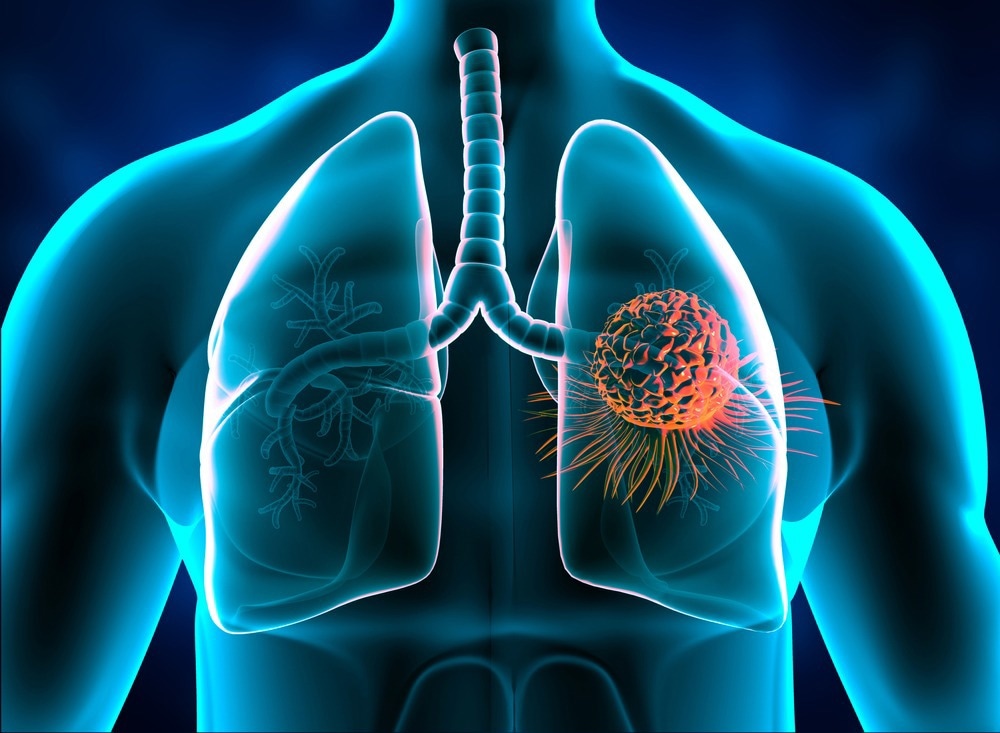Scientists studying the mechanics of lung cancer’s early stages have discovered a new potential treatment that could also aid in the early detection of the disease.

Image Credit: Explode/Shutterstock.com
TLR2 protein levels in tumors were found to predict a patient’s survival after being diagnosed with lung cancer, according to a study.
A TLR2-activating drug compound was tested in mice and discovered to inhibit tumor growth in the initial stages of the disease.
With only a 6% five-year survival rate from late-stage lung cancer, compared to 50% when diagnosed earlier, experts believe the breakthrough could help detect the disease earlier and improve patient outcomes.
TLR2 helps control some of the body’s defense mechanisms when cancerous mutations occur in cells, according to a group led by researchers from the University of Edinburgh.
The protein is associated with senescence, a process in which cells stop growing and secrete a wide range of chemicals and other proteins that behave as warning signals and countermeasures against cancer.
Senescent cells are detected in early lung cancers but not in late-stage cancers, implying that senescence can slow cancer progression.
After determining the significance of TLR2, the researchers used information from human tumor samples to affirm that patients with high levels of protein in the initial stages of lung cancer had a higher chance of survival than those with lower levels.
The researchers then used a drug known to activate TLR2 in a lung cancer mouse model. Researchers discovered that the drug inhibited the growth of lung tumors.
Experts hope that these findings will spur research into using senescence and the related secreted chemicals as part of a screening program to provide an earlier diagnosis of lung cancer.
The team adds that more research is needed, such as clinical trials to determine whether the drug is effective in humans.
Researchers from the University of Edinburgh, University College London, the University of Cantabria in Spain, the Spanish National Research Council, and the Mayo Clinic in the United States collaborated on the study.
Cell Reports published the study. It was supported by Cancer Research UK, Wellcome, the Spanish Ministry of Science and Innovation, and the US National Institute of Aging.
I think these results are really exciting. Very little is known about the biology of early lung cancer and by understanding this process more we have identified a possible new treatment for this devastating disease. This project highlights the value of basic science research and how this can be translated into new treatments for patients.”
Dr Fraser Millar, Clinical Lecturer, Respiratory Medicine, University of Edinburgh
Source:
Journal reference:
Millar, F. R., et al. (2022). Toll-like receptor 2 orchestrates a tumor suppressor response in non-small cell lung cancer. Cell Reports. doi.org/10.1016/j.celrep.2022.111596